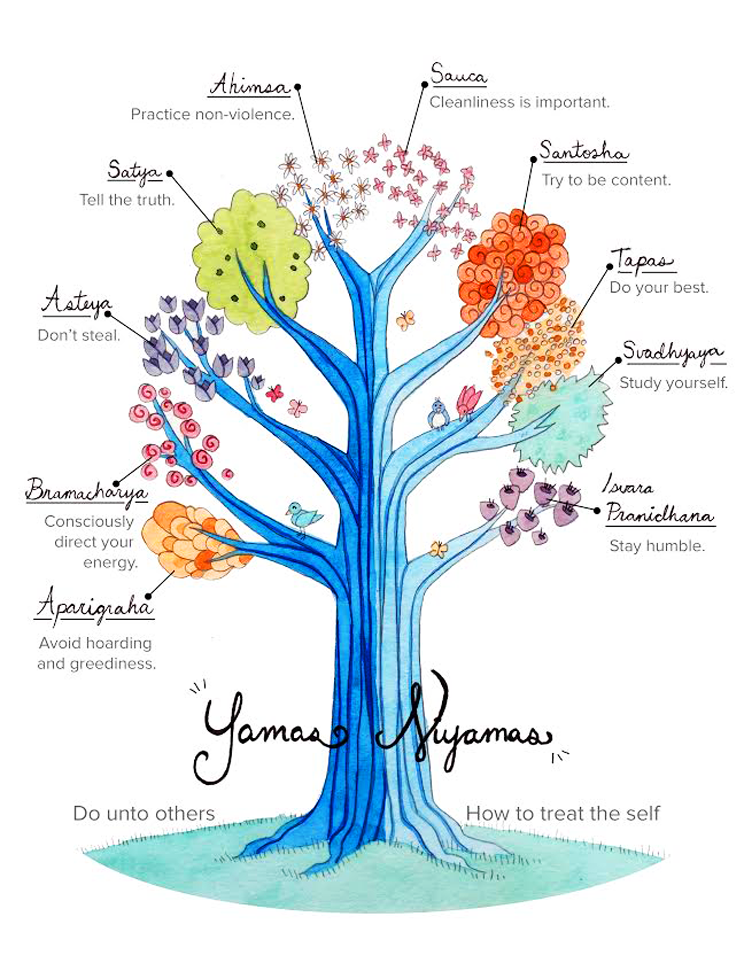
The right dimensions of yoga mats are important for beginners. While the standard size is 24 x 68 inches, there are many other sizes. Some are longer, some are shorter, and others can be even wider. A yoga mat should have a minimum width 24 inches and maximum length 84 inches for optimal performance. However, you may need to play with larger mats until the one you choose is right for you. You can test the dimensions of standard mats by trying downward-facing dogs or any other position that requires a firm grip.
Ideally, your mat will be slightly thicker then the one you use in class. This will ensure better grip for your feet and help you stay balanced. However, if you don't like the one you have, you can always find another mat. You can always find a cheaper alternative if you cannot afford the extra thickness. Another option is the Yoga Cloud Ultrathick 1'. This mat comes in 4 colors and is ultra thick. You can also choose a Sacred Yoga Mat which is reputedly the best gripping mat on the planet. It can also be recycled 100%, so you can be confident in its quality.

A thicker yoga rug will make you more stable and help prevent slippage. You can also use a thicker mat if you have an injury or if you're infirm. Thicker yoga mats are better suited to sitting or lying down. Those with weaker balance should stick to thinner mats. The minimum thickness is 6-8mm. Thinner mats are recommended for people who are more susceptible to injury.
If you're a beginner, you may want a smaller yoga mat with a wider bottom. For beginners, a 36"-long yoga rug would be ideal. It is important to choose a mat that is wide enough for your needs. If you're doing poses that require a large amount of room, you should buy a large-sized mat. While a long mat allows for greater flexibility in poses, it can also make it more difficult to balance on.
Make sure to measure the thickness before purchasing a yoga mat. A mat that is too thin will not be suitable. A thicker mat will offer more support. A thicker mat will be more comfortable for a beginner. For advanced practitioners, a yoga-mat of 5mm is the best. Choose a 4-mm thickness if you're just getting started. This is ideal for home usage. A thicker yoga flooring is essential for safety and comfort.

Your yoga mat's width is also important. Traditional yoga mats typically measure 24 inches in size, while oversized ones can reach 30 to 36 inch. A larger mat will allow you to spread your body more sideways, creating a stronger foundation. It can be difficult to balance on a thicker yoga pad in standing poses. In some cases, a wide yoga mat may be too narrow for you. If you require a larger mat, you should choose one with a width of 30 inches.
FAQ
Is it possible that I am depressed?
Depression is a common problem among teens. But, many teens struggle with depression.
This doesn't mean that you're crazy or weak. Most people who are depressed aren't aware of it. Depression is a medical condition.
There are many kinds of depression. Some people experience only sadness. Other people may experience other emotions as well. There are different degrees of severity.
Some people are mildly depressed while others experience severe depression. Depression is not always bad. Sometimes it can help us deal with stressful events.
However, if you find yourself feeling demotivated or sad all the time, you should consult your doctor. Your doctor will diagnose you and recommend treatment.
What are some mental-emotional issues?
Any condition that causes severe distress or impairment in functioning is considered a mental disorder. Depression, anxiety, schizophrenia and borderline personality disorder are some examples of mental disorders.
Why is mental health so important?
Mental health is crucial for everyone. Mental health is crucial for all people. So, it is essential to maintain a healthy mind.
Our bodies can start to feel stressed if we don't feel well. This can cause physical problems such headaches, stomachaches, backaches, or other symptoms. Our bodies and minds must be well looked after.
What can I do to prevent mental health problems?
It's not always easy to prevent mental illness. Here are some tips:
-
Don't drink alcohol. The effects of alcohol on moods can lead to depression.
-
Avoid using drugs. Drugs can affect your brain chemistry and make you feel worse.
-
Sleep well. A lack of sleep can cause anxiety and depression.
-
Exercise regularly. Exercise can release endorphins, which make you happy.
-
Consume healthy food. Do not eat junk food. You will feel lethargic and depressed.
-
Spend time with your loved ones. Spending quality time with the people you love can lift your mood.
-
Have fun. Enjoy life and try new things.
-
Take breaks from social media. You may feel isolated or lonely on social media.
-
Take care of yourself. Treat yourself nicely, even if you aren't feeling great.
-
Ask for help. If you're having trouble coping, then ask for help. Talking to someone you trust can be a help.
-
Remember that it's okay to cry. Crying helps to relieve tension and stress. It doesn't mean anything bad happened.
-
Be busy. Do something that you love.
-
Good hygiene is essential. Bad hygiene can make it difficult to feel attractive and clean.
-
Stay connected. Stay positive by connecting with others.
-
Learn how to relax. Meditation and yoga are two relaxation techniques that can help you deal with stress better.
-
Find meaning in the things you do. Find meaning in your hobby or work can bring you fulfillment.
-
Be present in the moment. If you can focus on the moment, you will not worry as much about the future.
-
Set goals. It can be motivating to set goals.
-
Do something nice for you. Your self-esteem can be raised by doing something kind for yourself.
-
Practice gratitude. Gratitude helps you to appreciate all of the good things about your life.
-
Volunteer. Volunteering can be an enjoyable way to spend time and make a difference in the world.
-
Give back. Giving back to others can make it feel fulfilling.
-
Be aware of warning signs. Don't be afraid to ask for help if your behavior changes.
How can one tell if someone has a mental disorder?
A person may be diagnosed with a mental illness when they experience symptoms that interfere with their daily activities. The symptoms of mental disorders vary from person-to-person. The most common symptoms of mental illness are sadness, anger, guilt, hopelessness and loneliness.
A person may also be diagnosed with a mental disorder if they meet at least three out of four criteria listed below:
-
Disturbed feelings or thoughts
-
Unruly behavior
-
Disturbance to functioning
-
Impairment in the ability to relate to others
What causes depression in teenagers?
Adolescence allows us to begin to form our identities. We start to define who we are as individuals and how we fit into society.
We also make new friends and develop romantic relationships during this time. These experiences can be stressful.
Normal stress is normal. However, if you feel stressed beyond your usual levels, you should seek professional help.
You might think you can handle things independently, but sometimes, you need someone else to talk to.
During times when you are stressed, your friends and family can help. You may find them able to offer support and help you deal with stress.
Meditation or exercise are two options. Both can help with stress reduction.
In addition, you could join a group such as a sports team or church. You will make new friends and meet new people.
Statistics
- It does have some influence, but not nearly as much as we might think, so focusing less on attaining wealth will likely make you happier (Aknin, Norton, & Dunn, 2009); (positivepsychology.com)
- More than 50% will be diagnosed with a mental illness or disorder at some point in their lifetime.3 (cdc.gov)
- According to the National Alliance of Mental Illness (NAMI), one in five Americans experiences mental health issues which translates to more than 40 million adults a year. (doctorondemand.com)
- More than 40 million adults in the United States have an anxiety disorder, but less than 37% of people seek mental health treatment for their symptoms. (talkspace.com)
- Appropriate nutrition and exercise are likely among the most efficacious and cost-effective positive mental health interventions. (ncbi.nlm.nih.gov)
External Links
How To
How to Care for Autism-Affected Children
Autism spectrum disorder (ASD) is a neurodevelopmental condition characterized by impairments in social communication and repetitive behaviors. ASD affects one in 50 people around the world. However, there is no cure.
Around 18 months, the first signs usually start to appear in infancy. Common signs include difficulty understanding others emotions, difficulties with language development, inability to make eye contact, difficulty understanding other people's emotions and difficulty learning new skills. These symptoms can lead sometimes to more serious behavioral issues like aggression, anxiety, depression and sleep disturbances.
There is currently no known cause for this disease, although researchers believe genetics play a role. Some studies suggest environmental factors like infections, fever, diet, stress, medications, vaccines, alcohol, and tobacco use could trigger the onset of ASD. Some studies also suggest that certain viruses such as rubella and measles may increase the chance of developing ASD later in your life.
Early diagnosis and intervention are key to improving outcomes. Many families struggle with their child’s behavior after they turn 18. Different treatment options are available depending on the severity and type of the problem. Research has shown that therapies that focus on social interaction and reducing problematic behaviors can make an impact.